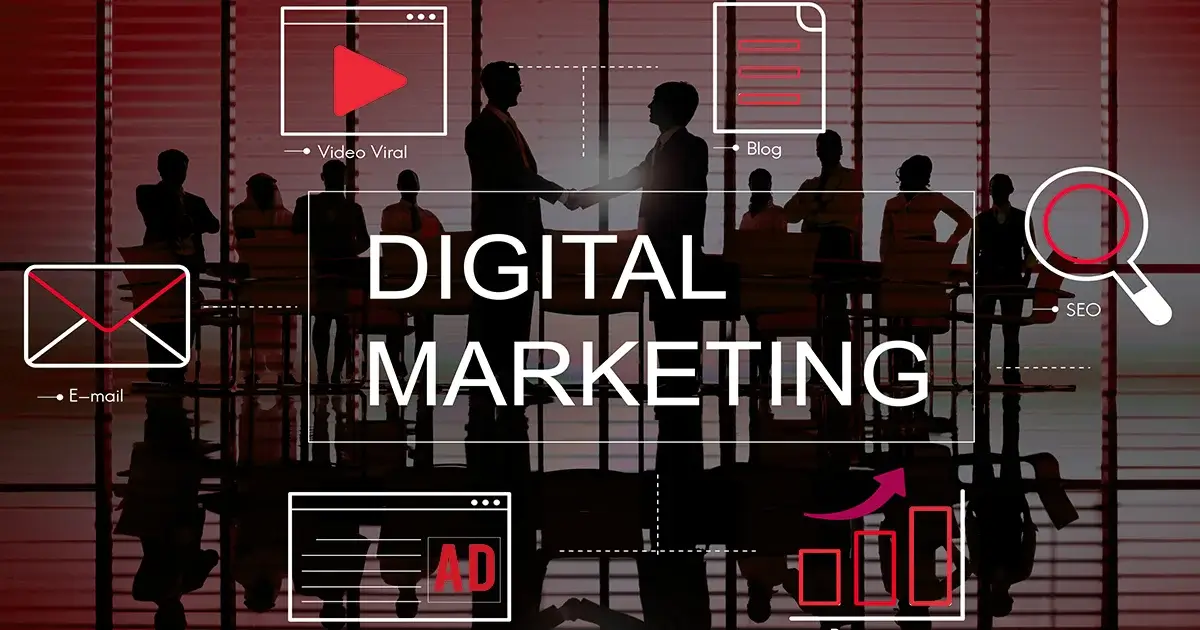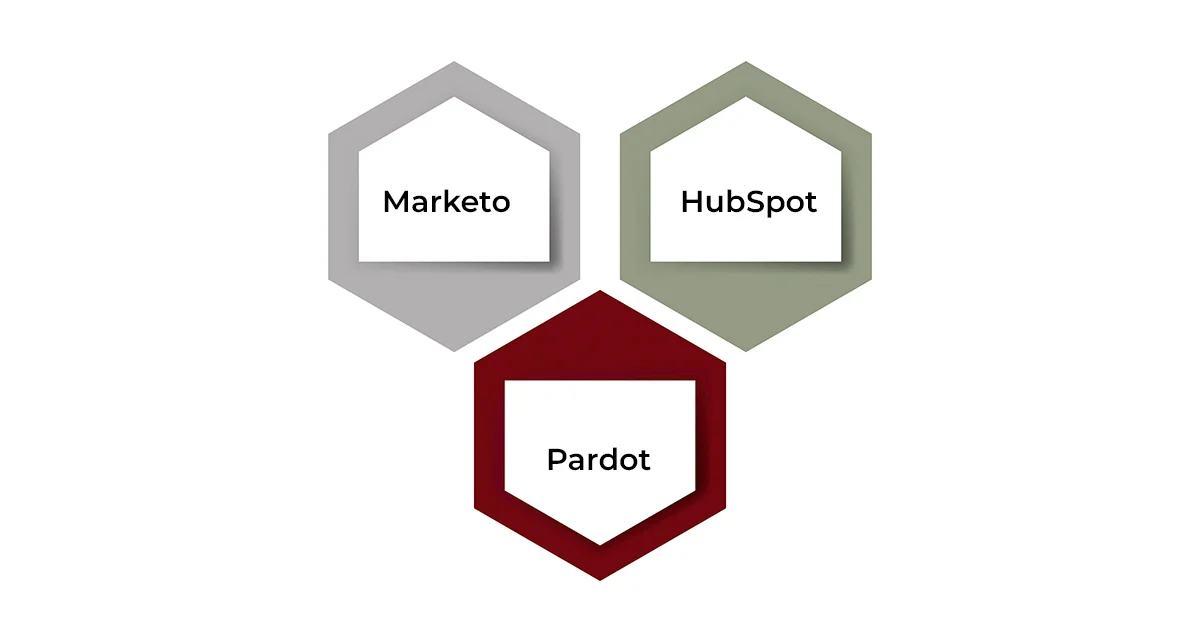Nowadays, businesses and marketers need to be aware of MarTech tools, which are becoming more and more crucial. Furthermore, the technologies have long been used in marketing, but the usage of MarTech to enhance campaigns has skyrocketed recently.
Firstly let us discuss Martech’s Definition. Martech is basically the combo of marketing and technology. It describes how marketers use MarTech tools and technologies to plan, organize, and carry out their campaigns.
Let’s have an eye on some amazing stats of Martech solutions:
A survey that examined the global marketing technology environment found that 26% of brand marketers anticipated an increase in their MarTech budgets of 6% to 10% in 2020. Whereas, in North America, 35% of marketers predicted that their MarTech budgets will increase by that much at the same time.
Another study examined the landscape of marketing technology globally, the global MarTech market is expected to be valued at 344.8 billion dollars by 2021. The worth of the MarTech sector reached 149.7 billion dollars at the same time in the UK and the US markets.
In other words, businesses all over the world are spending more on marketing each year, and a sizable chunk of that money is going toward marketing technology, particularly digital products.
The Importance of Marketing Technology

Modern businesses must embrace marketing technology since it frequently gives you an edge over your rivals. The resources they have available to them are generally a key differentiation between rival businesses.
Utilizing cutting-edge marketing technology can help you get new insights and solutions for your data, improve customer experiences, and make it simpler and more effective to follow prospects as they finally reach your system.
However, if your business isn’t using the most recent technology, you can be missing out on important knowledge or skills that are crucial to attracting more consumers and expanding your company.
DAM Solutions
Even though the specific tools utilized might vary from business to business, a MarTech Stack typically consists of a few key products. While some businesses rely on the essentials, others have complicated MarTech stacks.
Every phase of the marketing cycle, including attracting, engaging, converting, managing, and analyzing your target audience, should be covered by a comprehensive MarTech stack.
The MarTech Stack includes a number of the most popular tools and technologies. Below are some of them:
1) Analytics Tools
Organizations today rely more than ever on analytics solutions since you can’t execute what you can’t evaluate. In many businesses, the level of competition is high, prompting marketers to continually lift their game to beat the opposition. Tools like analytics offer a measurable way to evaluate the success of marketing ideas, promotional events, channels, etc.
2) Digital Asset Management
The MarTech Stack’s DAM solution is frequently referred to as its soul. Your content is gathered and handled there. The key to marketing efficiency and success is having a single, centralized resource for controlling a big volume of digital assets because the content is what drives marketing.
3) Customer Relationship Management
By managing communication, processes, payments, and orders in a single application, CRM technology aids organizations in improving ties with their existing clientele. This ease of use enables businesses to offer better customer service, generate more revenue from each client, and keep clients for longer periods of time.
4) Lead Management
Lead management software may also be used by marketing departments. Similar to CRM, this kind of marketing technology is useful for managing leads or prospective customers who haven’t purchased anything yet.
In simple words, here marketing professionals can attract, engage, and evaluate prospective leads using lead management systems to assess their sales-readiness.
5) Email Marketing
Launching and improving email marketing campaigns can be facilitated by specific services. The Services include email template management, automation of email sequences for new clients, and maintenance of client email addresses and preferences.
The technology behind email marketing also provides analysis tools beyond open rates, sometimes including monthly reports, A/B testing, and integration with social media and push alerts.
6) Marketing Automation
Marketing automation technologies are another form of technology that is frequently combined with email marketing and CRM. They can speed up the lead nurturing process by launching specific activities based on customer behavior.
7) Social Media Management
There are certain marketing technologies that can improve the efficiency of posting, reacting, and monitoring social media accounts by automating processes like uploading the same content to several platforms, scheduling posts, and compressing images.
Some social media solutions also provide guidelines for creating content that attracts your intended audience and profiling tools to learn more about your audience and their relationship with your company.
8) Content Management System
By making it easy to search, update, tag, produce, review, and change that information, content management solutions can assist businesses manage their marketing and website content.
Some content management technologies enable integration with print content or simple access for numerous different content creators, while others specialize in offering services for one sector of the market or one type of content.
Only a few of the common technologies found in the majority of existing MarTech Stacks are listed above. The MarTech landscape contains thousands of different tools and technologies, so it’s quite possible that no companies’ MarTech Stacks are the same as each other.
Integrating the Enterprise Digital Marketing Architecture with MarTech

Theresa Regli, a digital asset management specialist at Real Story Group, claims that the four technological layers in the enterprise digital marketing architecture are the ideal places to start when attempting to understand the MarTech Stack. These layers include the following (going from bottom to top):
Enterprise Database Foundation:
Analytics, business intelligence, and data about customers and products help compensate for this foundation.
Platforms for Major Marketing Technologies:
These technologies also include other fundamental elements that support higher-level technologies and services, such as digital asset management, marketing automation, social media interaction, and web content management.
Standard Marketing and Sales Services:
To speed up the execution of particular tasks, such as managing e-commerce, using content delivery networks, online video platforms, and self-service portals, these technologies rely on the layers beneath them. However, you need to keep in mind that content is a prerequisite for all of these technologies.
Primary Channels:
The numerous channels used by marketers to engage their target audience, including email, mobile, social, television, print, websites, and even kiosks, are included in this top layer. These channels are checkpoints in the framework of the buyer’s life cycle.
Obstacles in Marketing Technology

Martech installation, maintenance, and enhancement are not clear-cut processes. Instead, before they can fully enjoy the benefits of marketing technology, businesses should get ready to overcome a few major obstacles. Find below some of them:
- Since picking a platform involves more than just finding the proper technology, it can be challenging to identify the appropriate partner. Working with internal and external stakeholders to implement technology can lead to unanticipated setbacks and is frequently difficult when integrating a new system.
- It might be difficult for many firms to change how marketing operates. The process of working with coworkers to train them on new platforms and workflows makes daily tasks more difficult. Unsurprisingly, businesses usually face significant challenges when attempting to change their corporate cultures to incorporate MarTech.
Today’s marketing world is very data-rich. Your company may have a significant problem in sorting through data to identify what is important and what is not. Therefore, your marketing staff can be guided in the proper direction by picking the appropriate vendor and collaborating with data scientists to help analyze the massive amounts of data.
Benefits of MarTech

MarTech has several advantages, such as automating procedures and saving the time of marketers while allowing them to easily handle a variety of marketing channels.
On the other hand, businesses that invest wisely and strategically in MarTech are able to create a full suite of tools that work together effortlessly.
By enabling ongoing analysis that may guide decision-making, MarTech has made marketing into a far more cost-effective operation.
Years ago, marketers ran extensive campaigns and hoped for the best, frequently waiting months to have adequate data available to assess efficiency. Poor outcomes resulted in financial losses because it was much too late to change direction after learning those concepts.
That’s not the case anymore. With the help of MarTech, marketers have access to enormous amounts of data, giving them deeper insights about their target audiences than ever before.
These insights also come with actionable information, saving marketers the lengthy process of extracting information from raw data. Additionally, those insights frequently come in real-time, enabling marketers to alter direction when things don’t go as planned.
In general terms, MarTech is necessary for the existence of modern marketing. Even the platforms that marketers use to interact with their audiences are largely digital. The MarTech landscape is not going away even though it is still changing.
MarTech is and will remain the source for connecting with and interacting with the modern customer and DAM will become more and more important for businesses as more and more assets are required to power those more advanced technologies and tools.
Building a Marketing Technology Stack

For creating your MarTech stack, there is no rocket science approach to it. Your ideal marketing mix will be different from everyone else’s because your business is unique.
Now is the moment to decide the tech tools your team needs and to put them up so that your potential staff can use and make the most out of them. Some of the actions you must take are listed below:
Evaluate your main marketing objectives and strategies
You must develop your marketing tactics before deciding on a MarTech product. You only need to have a general understanding of the fundamental tactics you want to use and make sure it doesn’t have to be difficult.
Examine the plans that are currently in place if you already have a marketing team. This will enable you to determine the kinds of tools you require right away.
Set a projected budget
Having your ideal MarTech stack is useless if you are unable to pay for it. Consider the budget you’ll set aside for them as you start to decide what kinds of tools you’ll need.
There are a variety of options here. Each tool or each plan can have a different budget. As an alternative, you might decide on a team-wide budget that is applied annually, quarterly, or monthly.
However, the best option for small firms without a professional department is to choose a monthly budget. The majority of tools are offered on a monthly subscription basis, making it simpler for a team to abandon one if it isn’t effective.
Analyze the Martech Tools
Research the specific items you’ll add to your MarTech stack once you have your strategies, tool concepts, and budget in place.
It is also said that to get a broad sense of the options available, it can be useful to read product review blogs. With such activities, you will get to know the Pros and Cons of your desired tools. Moreover, you will also get an idea about the pricing as well.
Each tool’s workflow should be created by a teammate
Once you have transferred the data when you’ve bought the desired tools now it’s time to create workflows. It is said that you shouldn’t hand the MarTech tools off to your team without first creating a workflow when it’s time to start using them.
You should ask one teammate to investigate a particular tool. This teammate will have to produce a step-by-step guide and note workflow steps for utilizing the tool effectively. Then plan a meeting after that with the teammate to do live training.
Now the question arises is what is the need for all this? Well, once you have created a workflow then without a lot of assumptions, you can decide how to use the tool effectively. If everyone uses the tool at the same time, the process will be dispersed.
So once the workflow is created, you can ensure that every team member is making the best use of the product by employing a single, standardized method.
Examine the tools and change them if required
You should always evaluate your tools to see if they successfully automate processes, streamline workflows, and enable your team to operate more efficiently.
If the tools are not suitable for your organization then there is no guilt in terminating your subscription and choosing a different solution. Do proper research again or look into certain tools you may have heard about from other marketing professionals.
The Best 3 MarTech Platforms for Automated Marketing

There are officially more than 212 MarTech solutions available for marketing automation. Spend less time investigating each one to determine which best suits your MarTech requirements as we will be sharing some tools for you. The three best marketing automation solutions now accessible to B2B businesses are as follows:
1) Marketo
You aren’t going to regret developing a MarTech stack focused around Marketo’s marketing automation technology, which is the industry leader in marketing automation for businesses of all sizes.
With all the same features as HubSpot and expanded native CRM integrations with Salesforce, Microsoft Dynamic CRM, and SAP CRM, Marketo has quickly emerged as the top option for large, enterprise businesses looking to improve results, increase efficiency, and maximize the return on investment from their digital marketing strategies.
Compared to the other Martech solutions listed, this marketing automation platform is less user-friendly and straightforward for novice users, but it provides the most value for your money.
Companies who are sales-driven and are interested in this option should think about hiring a Marketo Advisor or Marketo Professional to handle the platform integration and train your current Marketing and Sales personnel on how to use it most effectively.
2) HubSpot
With marketing automation features like lead management, native CRM integration with HubSpot CRM or Salesforce, mobile marketing, account-based marketing, social media integration with lead profiles, predictive analytics, and third-party vendor integration, HubSpot’s workflow solutions are one of the best options available for marketing teams with little to no coding experience at small businesses.
You must use this feature to gain access to a user-friendly interface and elegant design. However, the expense of the solution increases as your contact list expands, which may be a turnoff for some businesses depending on their lead-generating techniques or procedures.
3) Pardot
Salesforce’s Pardot is another technology of the best MarTech systems for marketing automation. Despite being one of the expensive options, due to the straightforward integration needed, this is the best choice for sales-driven businesses already leveraging the Salesforce ecosystem for interdepartmental communication and other business purposes.
With all of Marketo’s features at their disposal, this solution makes it simple for marketers and sales representatives to work together to create more funnel and close more transactions.
The Best Ways to Choose the Right Platform for You
It’s time to decide which of the top MarTech platforms is best for your needs in terms of marketing automation, now that you are aware of them so you can make a rational decision. Map out your present marketing capabilities and objectives to start.
The choice of a marketing automation platform requires careful consideration of your present marketing procedures and the ability to spot areas that could use better.
Researching is the next step. To clearly understand which platform would best suit your company’s needs for marketing automation, investigate the HubSpot, Marketo, and Pardot platforms further by getting in touch with each vendor for more information about each platform.
Once you’ve determined which one or two solutions will best meet your objectives, arrange a demo and speak with actual platform users who are members, preferably from other companies in your industry. Make sure the demo includes all possible platforms’ core users so that any queries or worries can be resolved before an agreement is signed.
On the other hand, if you’re having trouble choosing between two or more platforms, ask each vendor for a demonstration of the particular features you’re most interested in to get a sense of which one will fit your needs the best.
Upon executing these steps, you’ll be informed and equipped to use the MarTech platform that best satisfies your demands for marketing automation.
Tips for Martech Stack
You’ll be pushed in a lot of different directions as you build your marketing technology stack. When your company is expanding, you may feel tempted to increase complexity in order to fill critical gaps. Below are some tips you need to follow:
Prioritize strategy over technology
In order to support processes that are still being developed, it might be tempting for businesses to rely on technology as they expand. The majority of the time, this occurs when a team embraces effective tools and tries to build its systems around them.
Many organizations make this mistake. They prioritize technology over company strategies, which is a wrong approach. Your success will depend more on how you use the tools than on the tools themselves.
You must simplify the systems
To make the most out of them, you need to keep the systems simple. Put your existing approach in writing, and discuss with your management the importance of each step of your procedure. Eventually, take into account which procedures could be carried out more effectively and which could be completely done away with.
Strive for solutions that will last for a longer time
You need to make sure that all of the actions you take now about your tech stack must continue to benefit your team for a longer time period.
However, if you continue to scale, you will most likely change systems a dozen times over the following few years. You shouldn’t stress over choosing your eternal technology, but you also shouldn’t opt for a product that will be outdated in a couple of months.
Conclusion
In this blog, we have covered almost everything which is important to know about MarTech, its importance, obstacles, benefits, and other relevant information.
Moreover, it is a fact that keeping up with rapidly evolving marketing technologies has become a significant factor in a marketer’s role.
The most recent tools on the other hand are a need if you want to stay in the spotlight and offer the most value. Ultimately, it’s critical to be aware of future developments because marketing and the technologies employed within it are constantly evolving to suit new demands and obstacles.
We hope you have gained a lot of knowledge from this tech blog. In case we have left key some information then do mention some of them in the comments section.


